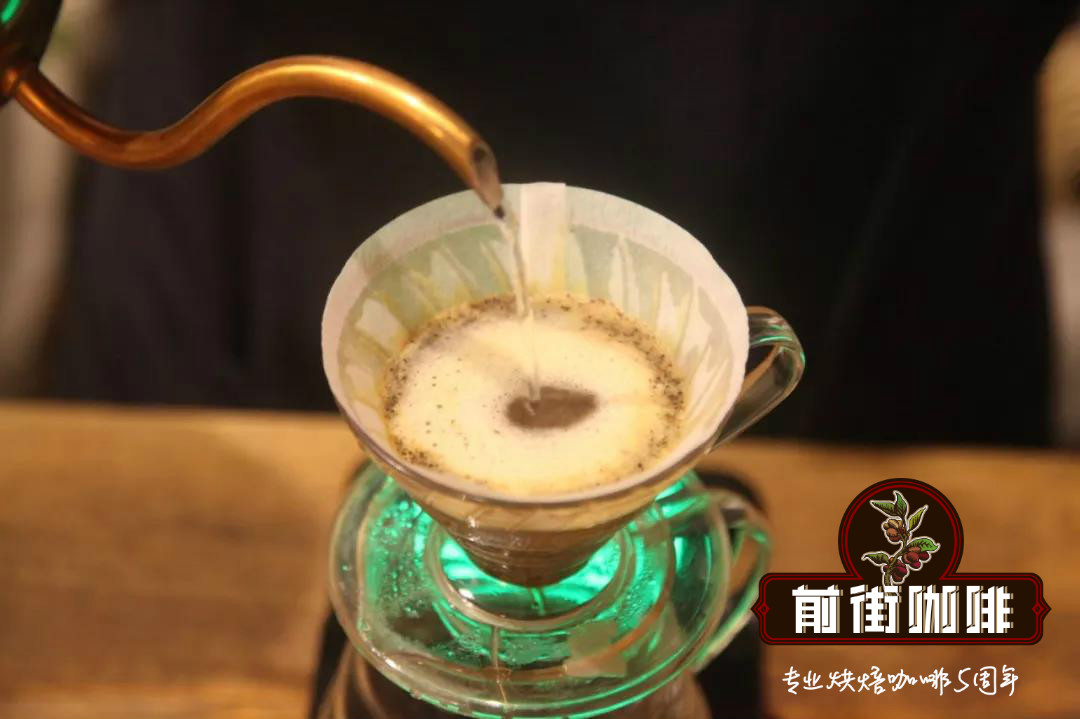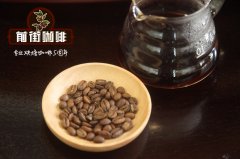Organic coffee | how to make coffee in a cinnamon pottery pot? Flavor characteristics of Mexican Coffee

Professional coffee knowledge exchange more coffee bean information please follow the coffee workshop (Wechat official account cafe_style)
Mexico, a big coffee grower
Mexico, located at the northern tip of Central America, is the fourth largest coffee producer in the world, mainly growing Arabica coffee beans. Due to the influence of geography and weather environment, almost all the well-known Mexican coffee producing areas in the world are in the southeast of the country, near Guatemala. These include Oaxaca (Oaxaca), Coatepec (Cotepe), Veracruz (Veracruz), Chiapas (Chiapas) and Pluma (Pramin).
Although Mexico is at the edge of the coffee production belt and the flavor of coffee is relatively peaceful, the coffee grown in this country is quite characteristic and even representative.
[history]
Coffee arrived in Mexico very late. In the second half of the 18th century, Spanish immigrants brought coffee trees from Cuba and Dominica in the Caribbean, but it did not really grow coffee commercially until the 1790s, when Germans and Italians emigrated from Guatemala and Central and South America to Mexico, and Veracruz first appeared coffee plantations. Mexico has always maintained the tradition of small farmers. The agricultural reform after the Mexican revolution allowed aborigines and farmers to own small plots of agricultural land and be self-sufficient. The 1970s and 1980s were the golden age of Mexican coffee. In 1973, the Mexican National Coffee Institute (INMECAFE) was established to provide technical assistance to small farmers, loans, guaranteed acquisitions, and even in line with the international market, resulting in an increase in coffee output.
Later, the Mexican Coffee Association (Instituto Mexicanodel Caf é, or Inmecafe) took control of the coffee industry. The Coffee Association controls both coffee cultivation and the market for coffee beans that can be exported since November. The association provides farmers with minimum purchase prices, technical advice and other assistance. However, since 1991, the Coffee Association's activities have been reduced and its functions are likely to be further weakened.
The collapse of the coffee agreement (Coffee Agreement) and the disappearance of price support have actually helped some producers by forcing them to develop their own brands and gain closer ties with foreign markets, while the NAFTA agreement between Canada, the United States and Mexico will further help Mexican products export to North America. Some people think that the best giant coffee beans are made in Mexico rather than Guatemala, but the supply and quality of coffee beans in both places can vary. The coffee beans, known as Maragogype, are large-grained and produce coffee that is smooth, mellow and fragrant. The poverty of farmers has caused most coffee to grow under natural conditions, that is, without the use of chemicals such as insecticides or fertilizers.
Mexican Coffee Mark 1: organic Coffee
Arabica coffee accounts for 70% and 80% of all coffee production, but it has high requirements for weather and soil environment, and its ability to resist insect pests is very poor. Therefore, many countries that mainly grow coffee in Arabica will use pesticides and chemical fertilizers to improve the success rate of planting.
However, some countries will use more environmentally friendly organic planting methods. From the time the coffee seeds are buried in the soil, they do not need all chemical raw materials, but only rely on natural conditions, and they also need to grow in all the planting and production processes. Only through strict control, supervision and certification by professional institutions can it become a real organic coffee.
It is worth mentioning that the certification process of organic coffee is quite long, which takes about three years. So when coffee growers decide to do organic certification, it means a time-consuming and costly investment, and Mexico is the world's largest producer of organic coffee.
The elephant bean was found in Maragogype in northeastern Brazil in 1870. It is the largest coffee bean among Arabica beans and is basically three times the size of other coffee beans.
In addition, elephant beans, as a descendant of Arabica, can also adapt to the lower altitude planting environment and have a good flavor performance. Among them, the elephant bean, which is recognized as the best quality and the most representative, grows in the two neighboring countries, Mexico and Guatemala.
But most coffee lovers say they still prefer Mexican elephant beans. On the one hand, they are organic beans grown by heaven, and on the other hand, the elephant beans in Mexico's Liquidambar MS (Liki Danbar) region are also famous for their smooth, mellow, fragrant and attractive taste.
Mexican traditional Coffee Cinnamon Pottery Pot makes Coffee
Caf é de olla, a traditional Mexican coffee, gets its name from a traditional clay pot used to make coffee. Moreover, many locals believe that the most authentic way is to brew coffee in this clay pot and season it with coarse sugar bars and cinnamon sticks.
To be honest, the traditional coffee practice of Mexicans is a bit heroic. Especially in the past, when winter came in Mexico, lots of sugar, whole cinnamon sticks and tequila were added to the Caf é de olla to keep warm.
But now Mexican coffee has also been improved to become one of the fancy coffee. If you are a coffee lover, you might as well learn how to make it:
1. Heat a cup of milk, a teaspoon of cinnamon powder and a teaspoon of vanilla powder in a pot.
two。 After mixing well, add the cocoa powder until it dissolves again.
3. When the milk mixture is cooled, pour it into the prepared black coffee.
4. Finally, decorate with cinnamon sticks, sprinkle some cinnamon powder and Mexican coffee will be fine.
Important Notice :
前街咖啡 FrontStreet Coffee has moved to new addredd:
FrontStreet Coffee Address: 315,Donghua East Road,GuangZhou
Tel:020 38364473
- Prev

How about Organic Yunnan small Coffee beans in Lamper Manor? coffee cultivation in Lamper Manor in Yunnan Province
Professional coffee knowledge exchange more coffee bean information Please follow the coffee workshop (official Wechat account cafe_style) starting from Lancang County in Yunnan Province towards the China-Myanmar border, after an hour of bumpy mountain road at an elevation of 11001500 meters, finally arrived at its destination-Lamper Ecological Coffee Farm. At this time in front of the scenery, so that the editor can not help but admire: the ethereal Baiyun
- Next

What kind of Yunnan small-grain coffee tastes good? what are the flavor and taste characteristics of Yunnan Hongmi coffee?
Professional coffee knowledge exchange more coffee bean information please follow the coffee workshop (Wechat official account cafe_style) the pride of Chinese coffee people Yunnan Lujiangba Zimo Manor mention Yunnan I believe that the first thing that every literary and artistic young woman will think of is the reputation of having the most desirable tourist destination in the world: Lijiang is one of our Chinese.
Related
- Detailed explanation of Jadeite planting Land in Panamanian Jadeite Manor introduction to the grading system of Jadeite competitive bidding, Red bid, Green bid and Rose Summer
- Story of Coffee planting in Brenka region of Costa Rica Stonehenge Manor anaerobic heavy honey treatment of flavor mouth
- What's on the barrel of Blue Mountain Coffee beans?
- Can American coffee also pull flowers? How to use hot American style to pull out a good-looking pattern?
- Can you make a cold extract with coffee beans? What is the right proportion for cold-extracted coffee formula?
- Indonesian PWN Gold Mandrine Coffee Origin Features Flavor How to Chong? Mandolin coffee is American.
- A brief introduction to the flavor characteristics of Brazilian yellow bourbon coffee beans
- What is the effect of different water quality on the flavor of cold-extracted coffee? What kind of water is best for brewing coffee?
- Why do you think of Rose Summer whenever you mention Panamanian coffee?
- Introduction to the characteristics of authentic blue mountain coffee bean producing areas? What is the CIB Coffee Authority in Jamaica?

